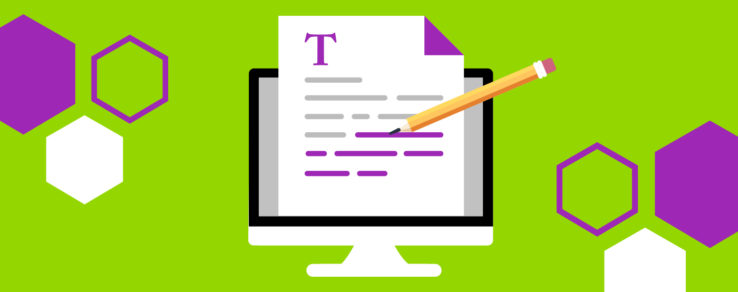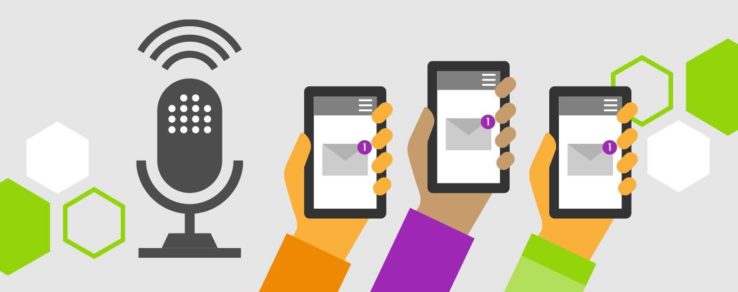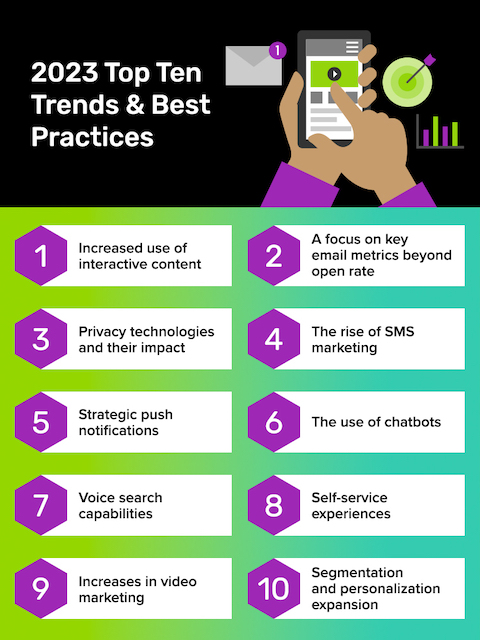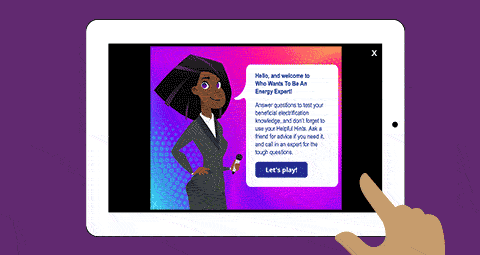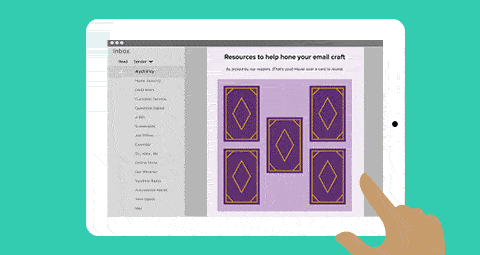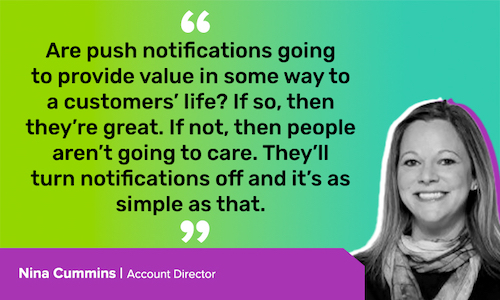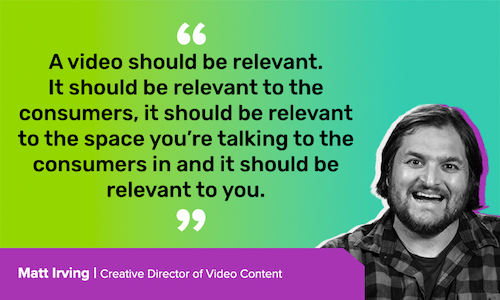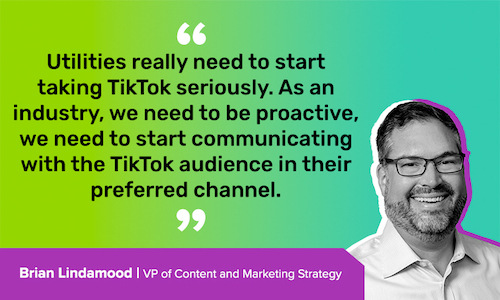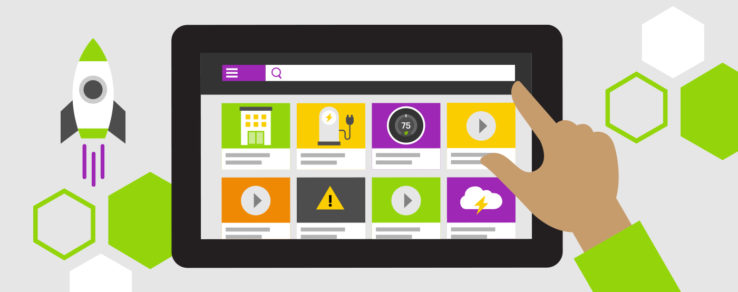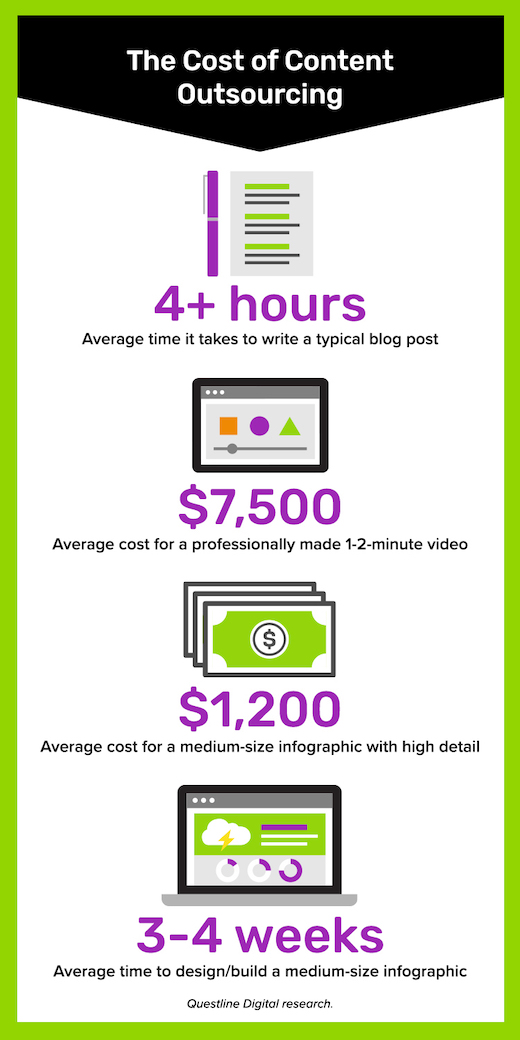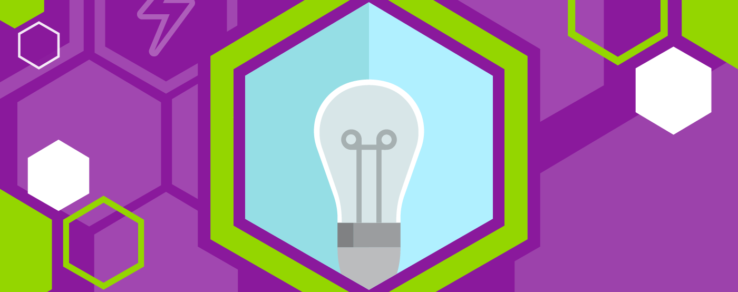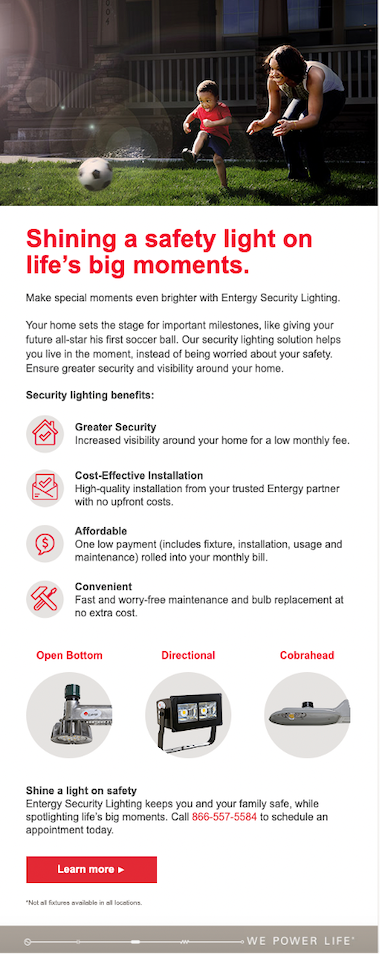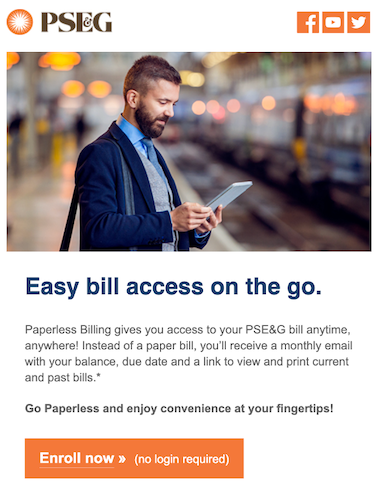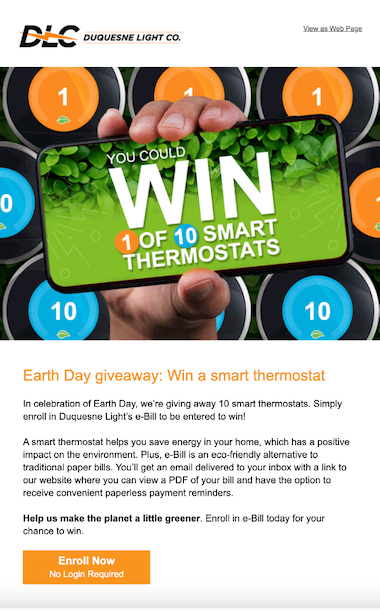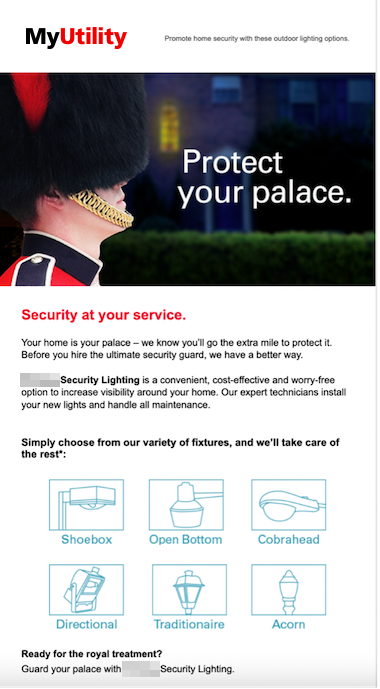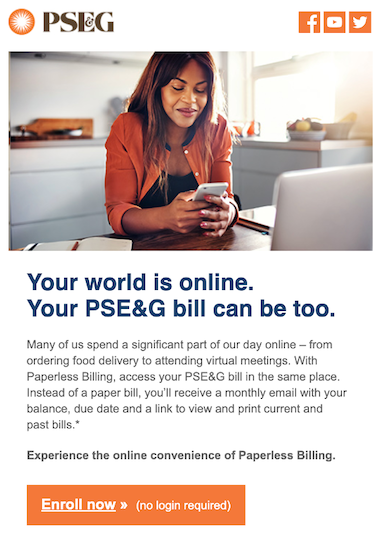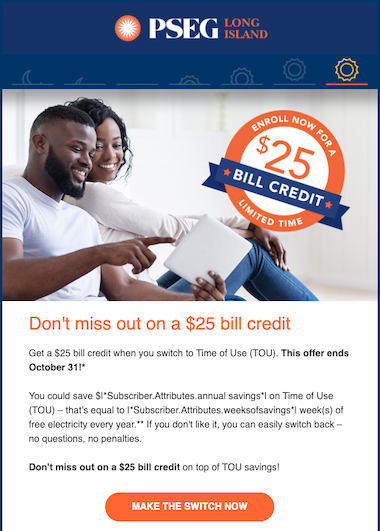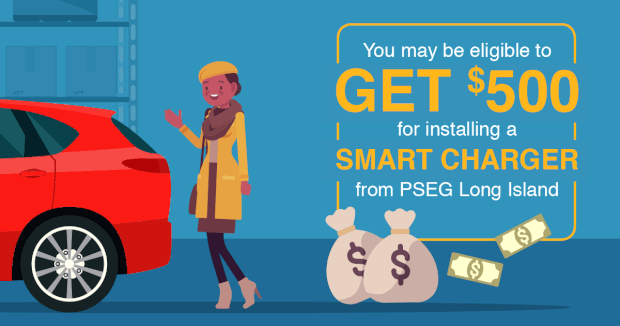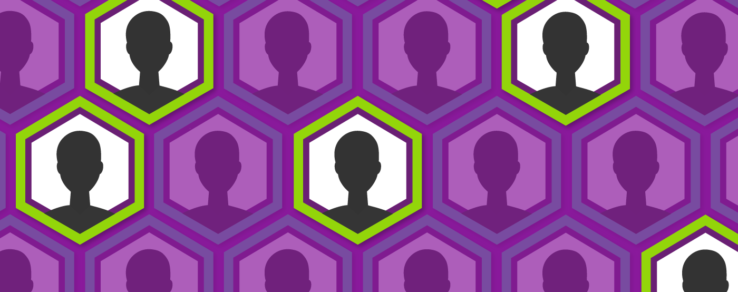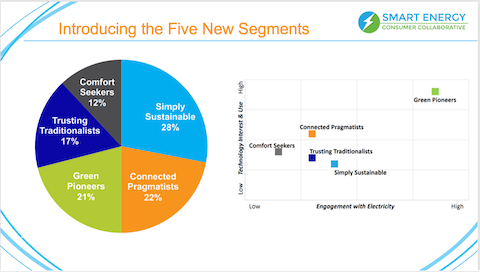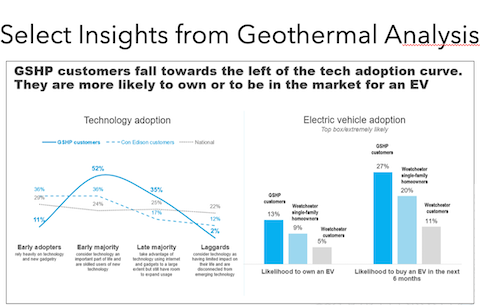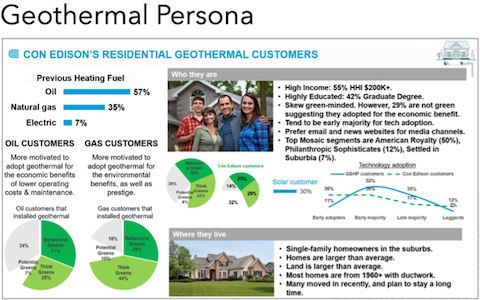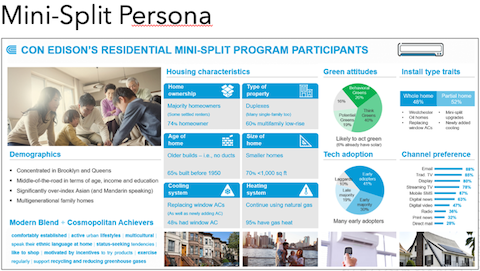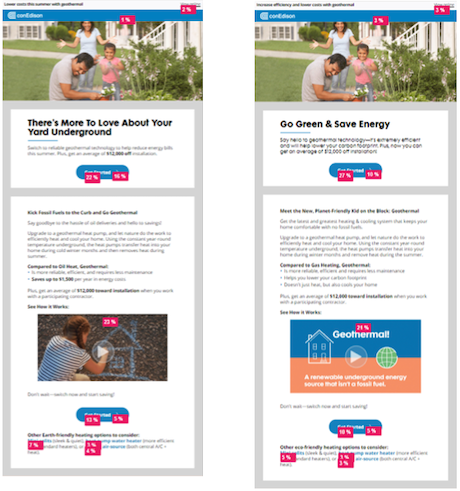To capture the attention of energy utility customers, the copy in your marketing campaigns is just as important as the design. As an energy copywriter, you have the power to increase customer engagement and participation in your energy utility’s programs and services. For example, a strong subject line will encourage email opens, while a successful call-to-action will motivate customers to take the next steps.
With 15 years of writing and marketing experience in a wide variety of industries, Questline Digital’s Senior Energy Copywriter, Breanne George, shares copywriting best practices to transform your utility’s marketing promotions.
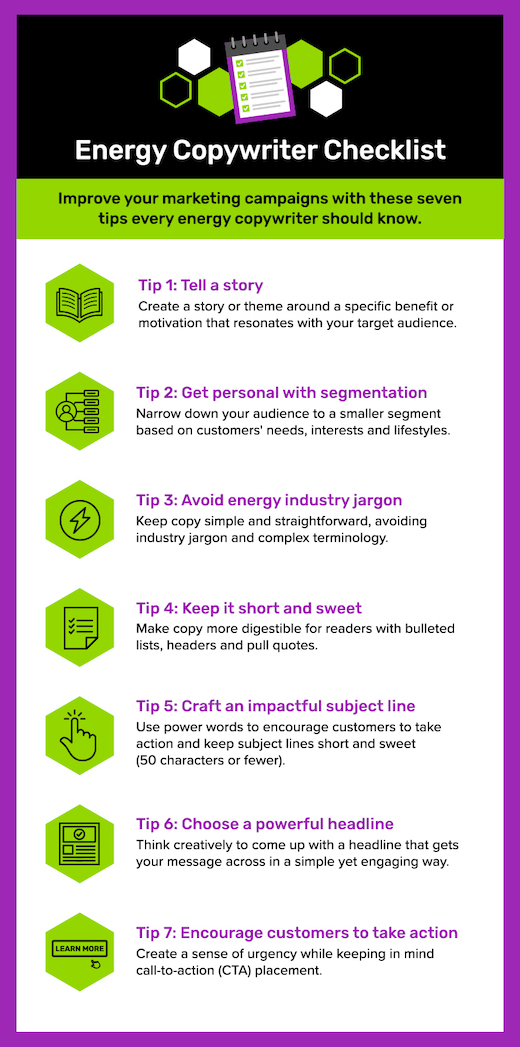
Tip 1: Tell a story
When you think of storytelling, you probably think of your favorite book or magazine article. However, your marketing campaigns can tell a story too. As an energy copywriter, you should create a theme around a specific benefit or motivation that resonates with your target audience.
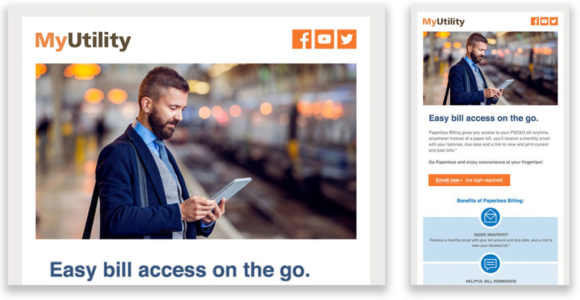
For example, we focused the above ebill message around the benefit of “anytime, anywhere bill access” for a major Northeast utility’s paperless billing campaign. Since a majority of the utility’s customers were commuters who used public transportation, the copy and imagery aligned to tell a story about easy bill payments that resonated with this audience.
In another email campaign to promote a Southeast energy utility’s security lighting program, Questline Digital created a story about the importance of security all year round. Through creative copywriting, the email campaign expressed how security lighting gives customers more time to enjoy summer fun, whether at a barbecue or basketball game. They don’t have to worry about their safety when the sun goes down.
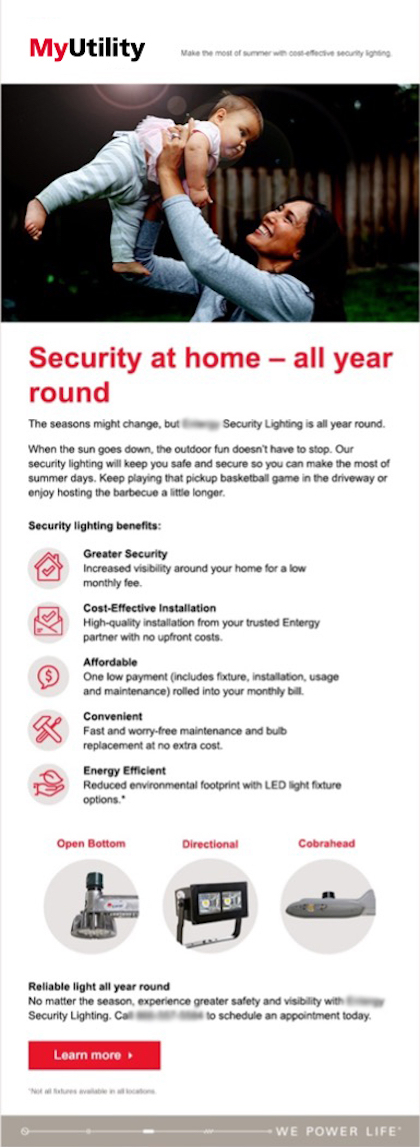
Tip 2: Get Personal with Segmentation
Whether your energy utility is targeting electric vehicle owners or low-income customers, narrowing down your audience to a smaller segment will improve email engagement. In fact, 74% of customers feel frustrated when content is not relevant to their interests. In today’s age of personalized digital communications, segmentation is an essential tactic for energy copywriters.
Your campaign should draw in customers by appealing to their needs, interests and lifestyles. To achieve this, you need to think about your audience:
- What would make their life easier?
- How does your program or service benefit customers?
- Does the copy motivate them to keep reading?
To connect with customers who would benefit from a Time of Use (TOU) rate plan, PSEG Long Island utilized segmentation to send personalized emails to distinct groups of customers. For example, one email targeted electric vehicle owners and another email targeted customers who would benefit most based on their energy usage behaviors.
Instead of sending one mass message to all eligible customers, the emails were tailored to each individual and how much they could save based on their energy usage. The utility leveraged smart meter data to create these targeted messages.
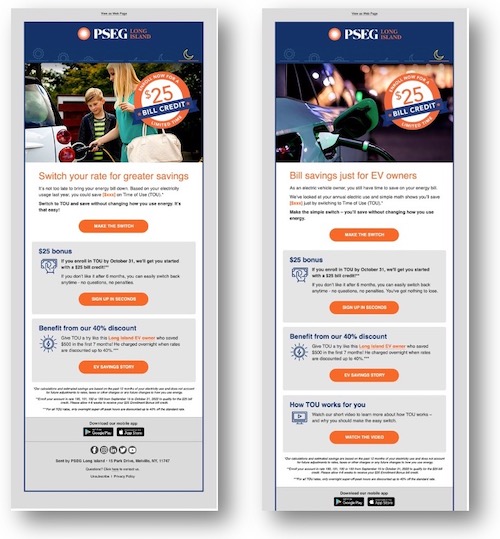
For segmentation success, energy copywriters need demographic information, marketing personas and any other research that breaks down your audience and what matters most to them. The more insights you have on your audience, the more the copy will reflect customers’ unique needs and interests.
Tip 3: Avoid Energy Industry Jargon
For energy copywriters, it can be all too easy to forget that most utility customers aren’t experts in renewable energy, rate plans and other popular industry topics. Your readers may not understand complex terminology or programs that are common knowledge in the energy industry. That’s why writing copy that’s easy for customers to understand is essential for your email campaigns.
When you’re promoting a complex topic, such as an energy efficiency rebate or financial assistance program, put yourself in your customers’ shoes. They want to know what the program entails, key benefits and how to apply. They don’t need to know “everything but the kitchen sink.”
As an energy copywriter, you should avoid using industry jargon or technical language that your customers may not understand. To help customers learn more about a particular topic, try linking to educational articles, videos or infographics to provide extra assistance.
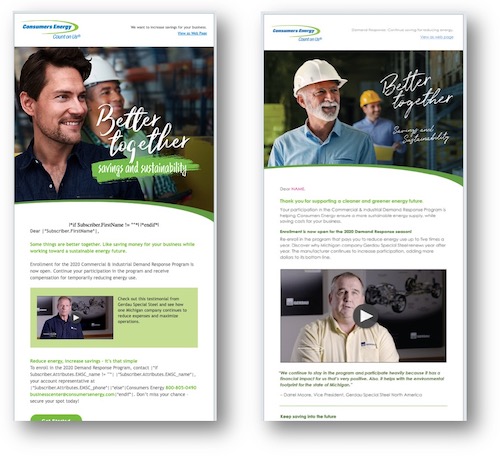
To help increase participation for a Midwest energy utility’s complex demand response program, Questline Digital created a segmented email campaign. The goal was to encourage participation among two groups of commercial and industrial (C&I) customers: prospective participants and past program participants. The emails were clear and concise, highlighting the benefits of participation and providing a helpful video testimonial from a local business.
Tip 4: Keep it Short and Sweet
In today’s fast-paced world, your customers don’t have time to read a long, text-heavy email. That’s why it’s best to write short and succinct copy.
Energy copywriters should be clear and concise, making the utility program as easy to understand as possible. This is where bulleted lists, headers, pull quotes and other call-outs help to break up the copy and make the information more digestible. Remember, your customers will get the full details when they click on your call-to-action.
It’s not always easy to write short and sweet when describing complicated utility programs. By using the copywriting tactics mentioned above, energy copywriters can avoid massive blocks of text. Use simple words and short sentences, focusing on the value propositions that resonate most with your customers.
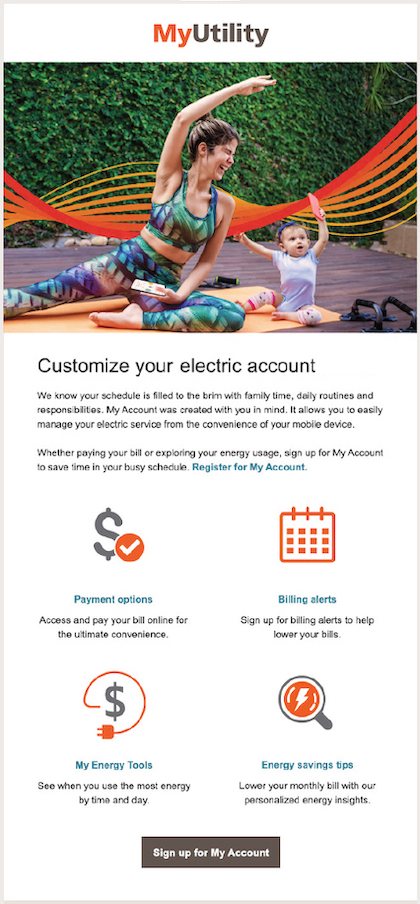
In this example, part of a welcome series for a West Coast energy utility, the email copy is easy to read with bullets and iconography. This email makes it easy for new customers to find important information, including payment options, billing alerts as well as energy-saving tips and tools.
Tip 5: Craft an Impactful Subject Line
Before your customers can engage with your marketing campaign, they first have to click into the email. A great subject line makes all the difference for energy copywriters. According to Questline Digital performance metrics, the sweet spot for subject lines is 50 characters or fewer. Your subject line should make it clear what customers will learn in as few words as possible.
We recommend using power words that encourage customers to take action. Consider the following subject lines about outage text alerts:
- Subject line #1: Text alerts to stay informed during an outage
- Subject line #2: Stay informed! Sign up for outage text alerts
While both subject lines have a similar message, the second option is actionable and encourages the reader to click into the email to sign up. For this example, you could also use a lightning bolt emoji to help the subject line stand out in customers’ inboxes. When it comes to subject lines, energy copywriters should try A/B testing to see what engages your utility’s audience.
Tip 6: Choose a Powerful Headline
Your headline captures attention and encourages customers to keep reading your message. As the first piece of copy your customers will see after clicking into your email, it’s vital to get your promotional message across in a simple, direct and engaging way. No pressure, right?
Energy copywriters should follow these helpful tips for writing an effective and engaging headline:
- Be clear and concise: Your headline should be simple and direct, while articulating what customers will be reading in the email.
- Lead with key details: Think of the most important message from your email and write it in a fresh way so the message stands out. This could be the dollar amount of an EV rebate program or the main customer benefit in a paperless billing campaign.
- Consider the imagery: Make sure the headline and visuals work together. For example, “Protect Your Palace” was a headline for a Southeast energy utility’s security lighting campaign featuring a royal guard in the hero image.
- Generate curiosity: By giving away just enough information — but not too much — your headline should persuade your audience to read further for more details.
- Get creative (within reason): Avoid copywriting that is too whimsical, cutesy or irrelevant. Think creatively but don’t stray from the ultimate goal of your campaign.
For this paperless billing campaign for a large Northeast energy utility, an entertaining headline paired well with the campaign theme, which showed humorous yet true reasons why customers should make the switch.
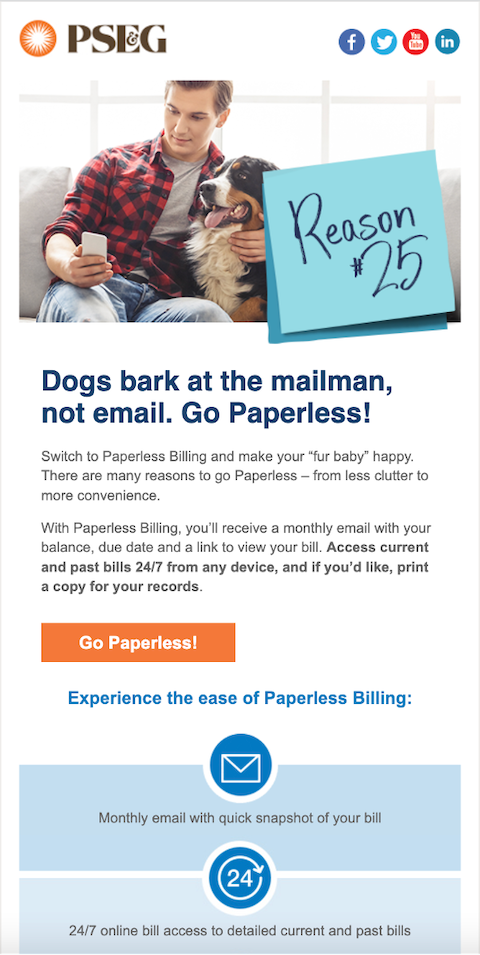
This headline for a Southeast energy utility’s charitable campaign helped to pull at readers’ heartstrings. The focus of the holiday-themed email was to encourage customers to round up their energy bill to give back to neighbors in need.
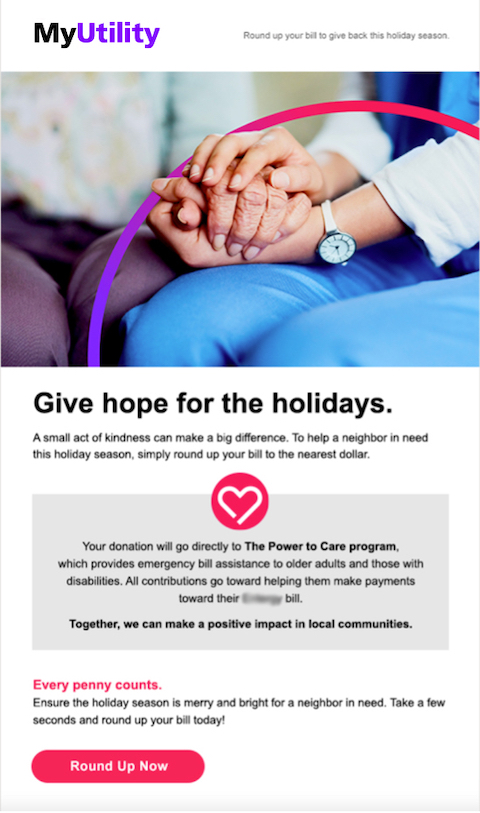
Tip 7: Encourage Customers to Take Action
After engaging with your message, you want customers to take action, whether enrolling in paperless billing or taking advantage of a rebate program. As an energy copywriter, your call-to-action (CTA) is one of the most important elements of your marketing campaign.
Keep these best practices in mind to create a powerful CTA:
- The shorter the better: Your audience will tune out an overly long and complicated CTA. Keep it short and simple so your customers understand what you want them to do.
- Urgency is effective: Use time-sensitive language to help boost program conversions and create a sense of urgency. Some examples include “Time is running out,” “Don’t wait” or “Sign up today.”
- Get creative with button copy: Sometimes a simple button like “Learn More” or “Get Started” works best. However, there are times when energy copywriters should switch things up and make it fun. For example, “Enroll. Enter. Win?” for a sweepstakes email or “Start Saving Now” for a rebate program promotion.
- Placement matters: If your email is lengthy and requires readers to scroll, include two CTAs: one near the top and one near the bottom. This ensures customers can click through at any point in the email.
In this example from Duquesne Light Company, a Pennsylvania-based energy utility, there are two CTA buttons at the top and bottom of the email. The first button, “Enroll for a chance to WIN” gives readers an immediate opportunity to take action. The second button, below the benefits box, gives those who read the entire email an easy click-through to the enrollment page.
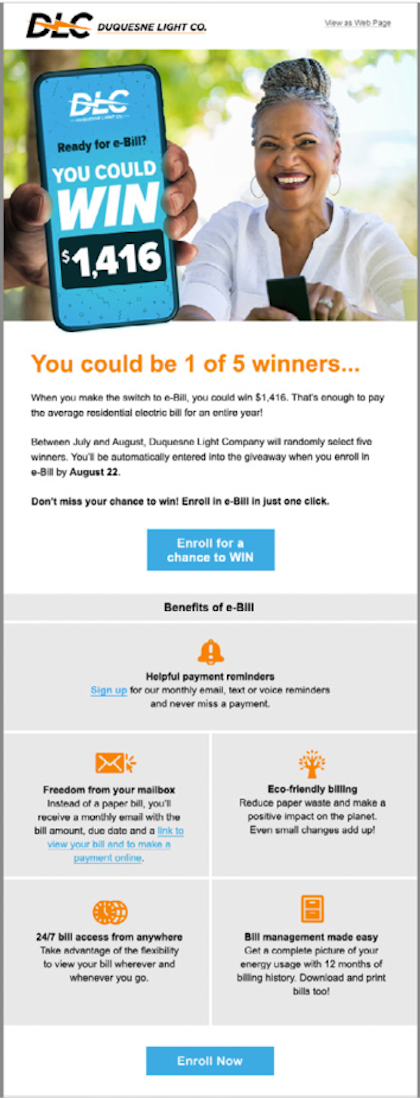
To help FirstEnergy promote its financial assistance programs, Questline Digital created an email campaign series with multiple CTA buttons. Since the email goes to both homeowners and renters, there are two buttons that link to the specific application pages.
The first two CTA buttons are located directly below the headline. Since the headline makes it clear what the email is about (connecting the customers to bill assistance), a CTA directly below the headline is appropriate in this instance. As an energy copywriter, you’ll need to determine what placement and number of CTAs are best for the subject matter and email length.
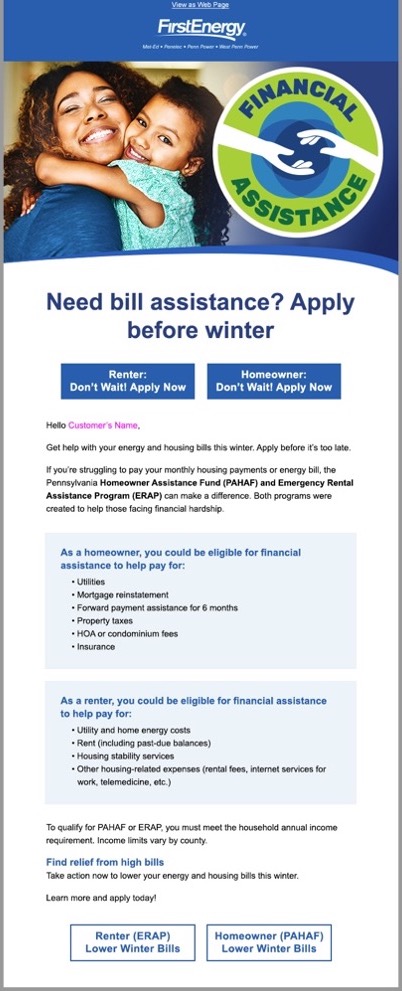
Copywriting is More Than Creative Writing
As these examples demonstrate, there are many things for energy copywriters to keep in mind when writing for utility marketing campaigns or program promotions. Copywriting is more than just creative writing — it’s about crafting an effective, concise and persuasive message that motivates your target audience. With these best practices in mind, you can transform your utility’s marketing messages, one word at a time.
